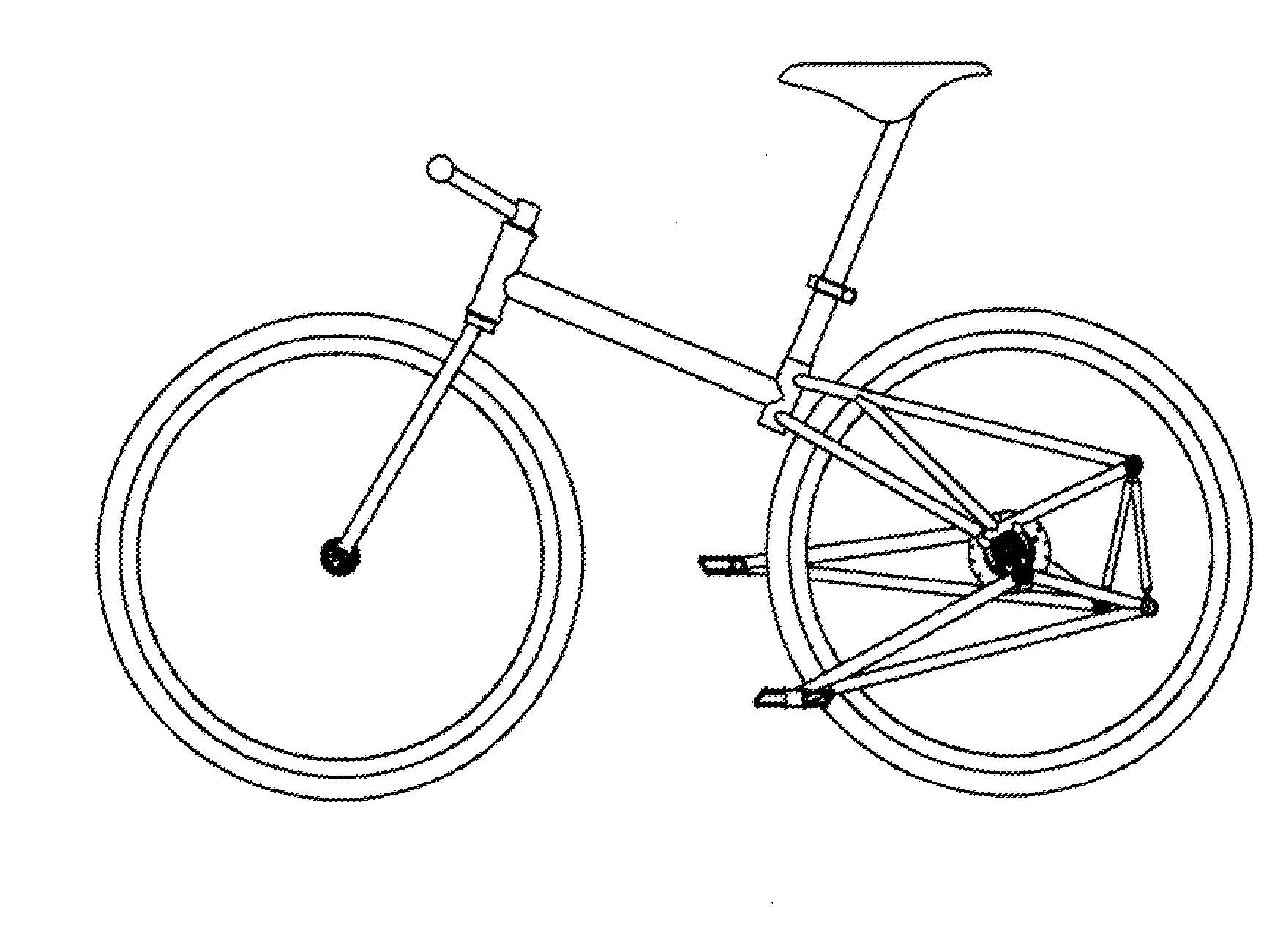Bicycle transmission
a technology for bicycles and transmission mechanisms, applied in vehicle transmission, vehicle components, rider propulsion, etc., can solve the problems of affecting the steering of the bicycle, limiting the speed of a given wheel size, and the pedals can be operated efficiently by the rider's legs, so as to achieve the effect of preventing contamination, preventing slipping, and ensuring safety
- Summary
- Abstract
- Description
- Claims
- Application Information
AI Technical Summary
Benefits of technology
Problems solved by technology
Method used
Image
Examples
Embodiment Construction
[0038]FIG. 2 shows a preferred embodiment of bicycle with the pedal arm and link geometry of the present invention. For clarity the mechanism from one side only of the bicycle is shown. A pedal 1 is mounted by a rotating joint to the forward end of a rigid pedal arm 7. The pedal arm is mounted by a rotating joint to a crank 4. The crank rotates around a crankshaft 6 which is mounted by a rotating joint to the frame 5. The pedal arm 7 is further connected to the frame by a link 3, the link having rotating joints at each end. It should be noted that the geometry of the pedal arm 7, has the connection to the link behind the connection to the crank and below a straight line, indicated by a dashed line in FIG. 2, through the pedal mounting position and the crank mounting position. This geometry requires the link to be substantially vertical to maintain reasonable angles between the link, to minimize forces in the link and the arm and to avoid the link crossing the center of the crank, an...
PUM
 Login to View More
Login to View More Abstract
Description
Claims
Application Information
 Login to View More
Login to View More - R&D
- Intellectual Property
- Life Sciences
- Materials
- Tech Scout
- Unparalleled Data Quality
- Higher Quality Content
- 60% Fewer Hallucinations
Browse by: Latest US Patents, China's latest patents, Technical Efficacy Thesaurus, Application Domain, Technology Topic, Popular Technical Reports.
© 2025 PatSnap. All rights reserved.Legal|Privacy policy|Modern Slavery Act Transparency Statement|Sitemap|About US| Contact US: help@patsnap.com



